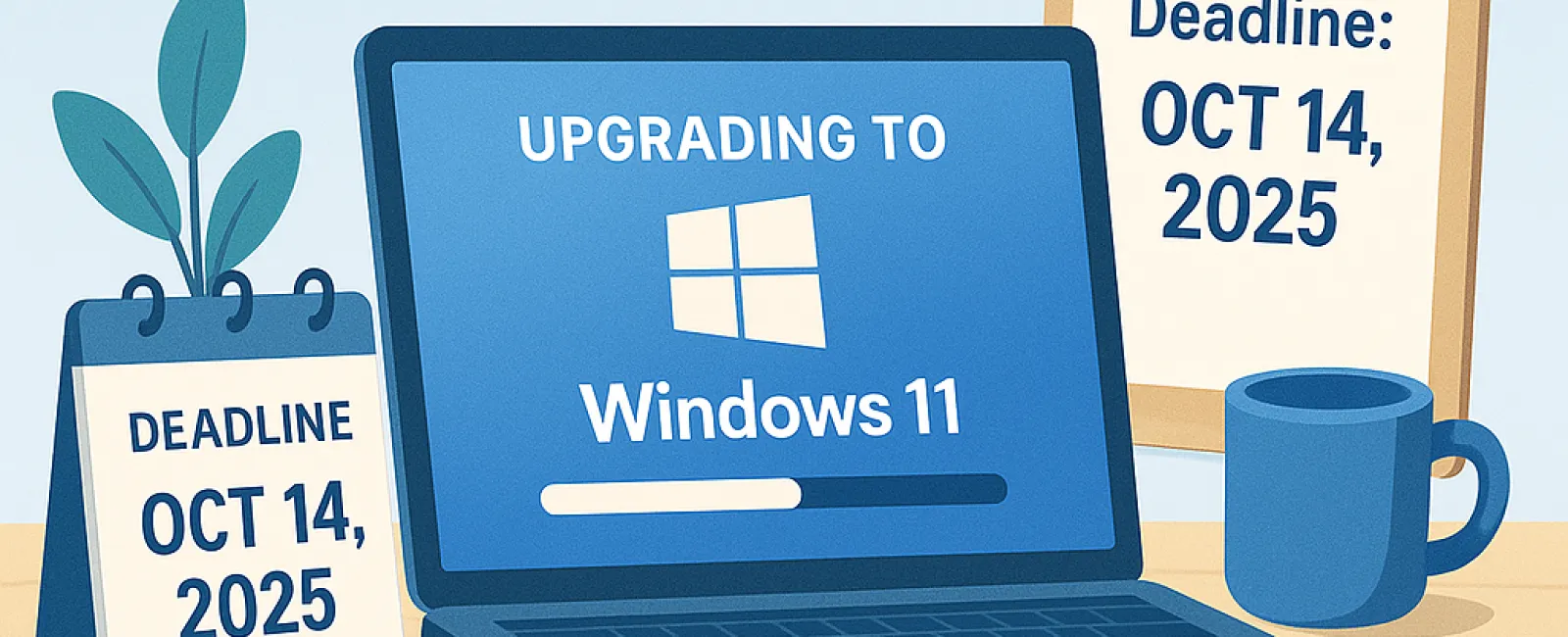June 23, 2025
If you're still using Windows 10 on your business computers, the time to act is now.
Microsoft will officially end support for Windows 10 on October 14, 2025. After that date, there will be no more security updates, bug fixes, or technical assistance.
Business owners need to realize that the cost of delaying an upgrade isn't just about eventually having to make the switch.
It's about the risks and expenses that accumulate while waiting.
"We'll Deal With It Later" Is An Expensive Strategy
Upgrading every machine might not be a welcome expense, so it's tempting to put it off until something goes wrong.
But procrastination comes with real costs:
1. You're Operating Without A Safety Net
When Microsoft stops updating Windows 10, any new security vulnerabilities become your problem.
Hackers target outdated systems because they are easier to breach. It's like locking your front door but leaving the windows open.
A single security breach could cost thousands of dollars or even jeopardize your entire business.
2. Software And Hardware Compatibility Issues
Many business applications, including accounting software, CRMs, and industry-specific tools, are already phasing out Windows 10 support.
If your systems fail during critical tasks or client presentations, the consequences can be costly.
It's not just software—new printers, peripherals, and security devices may also stop working properly with an outdated operating system.
3. Lost Productivity
Older systems run slower, crash more often, and frustrate your team. Even small delays add up, reducing efficiency, lowering morale, and harming your competitive edge.
If employees lose 10 to 15 minutes a day due to technical issues, think about the cost over a month.
4. Emergency Upgrades Are Always More Expensive
Waiting until systems fail or access is lost leads to stressful, costly emergency fixes, including:
- Last-minute hardware purchases
- Rush IT service fees
- Business disruptions during replacements
A little advance planning saves money and hassle down the road.
5. You're Risking Compliance Violations
If your business handles sensitive data or must comply with regulations like HIPAA or PCI-DSS, running unsupported systems could lead to fines or legal trouble. Many regulations require current security measures, which Windows 10 will no longer provide after October 2025.
What Smart Business Owners Are Doing Now
They're preparing ahead by not just upgrading devices but also by:
- Assessing which devices need replacement
- Streamlining software and tools
- Strengthening cybersecurity
- Planning IT budgets for 2025
How To Make The Transition Smooth
We recommend:
- Running a compatibility check to see which machines can upgrade to Windows 11 and which need replacing
- Auditing your applications to ensure they work on Windows 11 or newer systems
- Budgeting for new hardware now to avoid supply chain delays
- Partnering with an IT provider to manage the transition smoothly with no downtime or surprises
Don't Wait Until October To Panic
Delaying until the last minute will cost more in money, stress, and lost opportunities. We help small businesses upgrade smartly with careful planning, smooth execution, and a focus on future growth.
Click
here or give us a call at 954-327-1001 to book your FREE Consult and we'll help you identify what
needs upgrading, what can stay and how to build a transition plan that won't
disrupt your business before the deadline.





